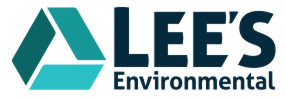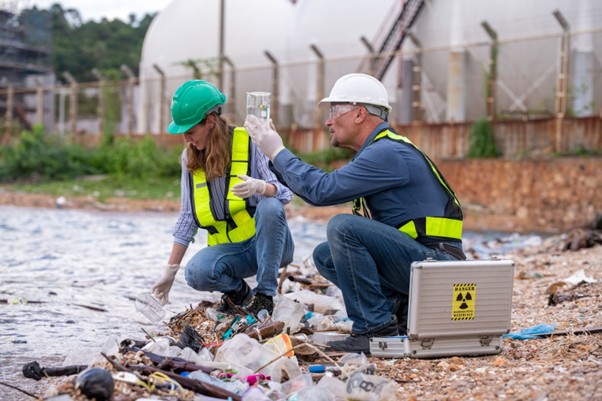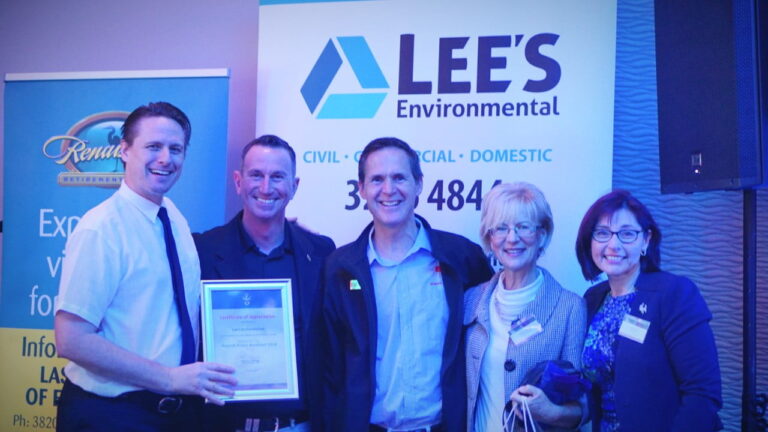Unused, unwanted, or excessive chemicals will all create chemical waste. Just like in every type of waste, it arises when a particular good ceases to be needed or appreciated.
If not properly managed, disposing of such waste can pose a risk to the health of humans and the environment. Such scenarios exacerbate the situation.
Chemical waste must be cleared and understood. Having knowledge will assist in preventing unforeseen accidents and incidents.
Business owners and homeowners should understand that when faced with this problem, contacting a licensed waste management company is a prudent approach. Lees Environmental is one of the companies that can be trusted.
For those interested in chemical waste, this blog is for you. It outlines the multifaceted definition of chemical waste and its relation to other kinds of hazardous waste. It also provides useful tips for effective chemical waste management techniques.
Managing a business or household leads to incurring waste, which is unavoidable. Understanding how to manage this waste will help you make better decisions.
What is Chemical Waste
When a chemical becomes excessive, chemical waste is formed. Just like every type of waste, it arises when a particular good ceases to be needed or appreciated.
Chemical waste is interconnected with other types of waste in many ways. For example, chemical waste becomes liquid waste if it is, in some way, a liquid.
However, not all liquid waste is chemically compound liquid waste. Certain types of liquid waste can be organic, like mud created from the overflowing of a dam.
This is obviously different to hazardous waste created from hazardous chemicals.
Also, not all chemical waste is hazardous waste. By definition, chemical waste means waste produced by a process which, in its major part, is a compound of chemicals—some forms may indeed be hazardous, like hydrogen sulphide, but some are not.
This waste can certainly be dangerous. Since working with chemical waste can be hazardous, it is safest to entrust such work to professional teams trained in waste management.
Some waste materials may become dangerous as time goes by. Electronic waste is a very good example, as most of the materials that form the body of common electronic devices become dangerous if disposed of incorrectly.
Different kinds of Chemical Waste
Disposing of chemical waste requires that each of the different substances be placed in different containers. This may mean that nitric acid should be separated from motor oils so that both can be disposed of safely.
Nonetheless, this demarcation requires an understanding of various categories of chemical waste. For example, dangerous wastes should be kept separate from other household chemicals.
What’s more, hazardous materials come in various shapes and sizes and can still be harmful to human health if they are improperly handled.
Hazardous Waste
Hazardous waste encompasses all materials that are potentially harmful to humans and the ecosystem. The improper management of chemicals can result in serious problems; therefore, they need to be managed by properly trained professionals in waste treatment.
Medical Waste
Medical waste is one of the most dangerous types of waste and includes refuse produced by hospitals, clinics, laboratories, and similar healthcare facilities. These wastes need to be treated within the framework of legally established procedures that govern them.
Electronic Waste
Electronic waste (e-waste) constitutes equipment that is no longer in use. Because of rapid technological advancement, this type of waste is on the rise, and the remaining chemical constituents of these products pose serious problems that most advanced waste treatment companies are addressing.
Radioactive Waste
Arguably the best-known radioactive waste comes from nuclear power plants and other facilities dealing with radioactive materials. Their potential harmful effects are of long-term duration, and adequate strict controls need to be enforced in accordance with best practices in safe and secure disposal.
Industrial Waste
The term industrial waste encompasses different types of refuse generated from the production process. Because the industry has an abundance of such waste, there are many different types of chemical waste, all of which require safe and careful treatment.
Household Chemicals Waste
One of the greatest overlooked sources of hazardous waste is household chemical waste, often associated with the mundane and harmless. Such lack of attention stems from the fact that people perceive such items as ordinary, harmless household products and accessible to everyone. It goes without saying, however, that household chemicals are a powerful ingredient that require attention during their handling.
Chemical Waste and the Environment
Chemical waste only becomes hazardous to the environment when proper and safe disposal techniques are not utilised. This typically takes place due to the use of dangerous or improper waste disposal methods.
This is why companies like Lees Environmental that are EPA certified and use proper methods, unlike several other licensed waste management services, are vital to public welfare.
The mention of dangers indeed exists, but it’s worth discussing these risks alongside the potential warning signs.
Potential Environmental Risks of Chemical Waste.
The potential risks to the environment posed by chemical waste are numerous because of the many diverse types of chemical waste. The chosen environment also greatly determines these risks.
These risks include pollution of water sources, poisoning of wildlife, soil contamination, and air pollution.
These risks stem from many ways of pollution. These occur because of disposal practices that are inappropriate. This could either be because of carelessness or willful illegal dumping.
Indicators of Environmental Impact with regard to Chemical Refuse.
Open wounds and concealed, metastasised injuries stem from environmental damage brought about by chemical waste. For this reason, it is important to approach potential damage with scepticism or professional guidance.
When damage is done, only to the extent that deep scars are left behind, that person will not remain indefinitely capable of retracting the damage thus making restoring the stasis highly questionable. Add or tweak text in this bullet, return to it right after completing all other ones allowing for full context.
What Drives the Creation of Chemical Waste?
Chemical waste is classified as such, only if chemical products are disposed of, discarded, or rendered useless. Like with any form of waste, it is a byproduct of the production process.
A plethora of chemicals are employed for a wide range of production purposes such as for testing in laboratories or in life-transforming medical facilities.
These multiple forms contribute to the generation of chemical waste. Due to how disparate some of this chemical waste can be, managing it has to be done consistent to the form it takes. However, various regulations can apply to different forms of chemical waste.
For instance, household chemical waste does not need to be managed with as stringent regulations as radioactive waste.
It would be impractical, given its lower level of risk.
What Is Chemical Industrial Waste?
The industrial sector deals with creating new products through a combination of processes. Waste is generated during this process in the form of solids, liquids or gases having distinct chemical compositions – something referred to as chemical industrial waste. In some rare scenarios, these different states of matter may co-exist.
This is what happens in the case of several industries that deal with toxic chemicals. These materials are dangerous when dealing with inadequate disposal techniques. However, members of the organisation who are skilled and experienced at their jobs try very hard to make sure that hazardous wastes are not mishandled.
What is Chemical and Hazardous Waste?
These terms chemical and hazardous waste are blended together for use in casual conversation. That said, this isn’t quite correct. These two, for example, can have totally different meanings even if the adopted measures for their sanitation are similar.
Considered to be a waste type that poses risk to human beings or the surrounding environment, hazardous waste can sometimes be one of a kind having distinctly non-chemical nature. Though it is safe to say that the majority of hazardous waste is composed of some type of chemicals.
Find out more on How to Dispose of Hazardous Waste here.
Chemical Waste and Emergency Spills
Chemical spills pose significant threats to laboratories and other facilities dealing with chemical liquids. Lees Environmental has dedicated an entire blog to exploring these incidents and the attendant emergency spill kits required.
The core message here is that spills are ubiquitous in any scenario involving fluids. In the same way that you would have fire extinguishers strategically placed in your workplace, it would be prudent to acquire an emergency spill kit to address all eventualities.
Lee Environmental’s Methods of Chemical Waste Disposal
The methods used in the disposal of chemical waste follow a clearly defined process that prioritises safety, compliance, and environmentally sustainable practices. From the initial step of waste collection and sorting to the final stage of disposal, our process is tailored to each client while remaining within the rigid frameworks set by the EPA.
Assessment of Waste and Collection
We begin by analysing the gaps in your current waste management system. For this specific case, we assess what types of chemical waste your facility generates, in what volume, and what unique handling necessities these wastes might have.
Based on these evaluations, we develop a specific collection strategy that meets your timelines and safety measures.
Safe Transport
In support of these activities, we have a fleet of specialised vehicles that utilise the latest safety features. Hazardous and chemical waste is transported from your facility to our treatment or disposal sites in complete safety.
Strategic Care Transport
Our logistics operations focus on minimising risk during transit, while at the same time observing all regulations relevant to the transport of hazardous waste.
Advanced Treatment and Disposal
We then apply treating and disposing of chemical waste. This includes neutralisation of hazardous compounds, recycling of recoverable materials, and disposal of irrecoverable waste.
Under EPA supervision, our facilities ensure that all waste is handled in an environmentally sustainable manner.
Support and Continuous Improvement
Our clients receive ongoing support from our team, in line with best practices for hazardous waste management, compliance, and minimisation of waste.
Lees Environmental leverages advanced business capabilities to aid clients in meeting due diligence obligations concerning the disposal of laboratory chemicals.
Chemical Waste Safe Disposal
Government regulations have made the disposal methods of chemical wastes not only safe, but also environmentally friendly and cost-effective. These measures mitigate, and in some instances, eliminate the risks posed by hazardous substances and various pollutants.









